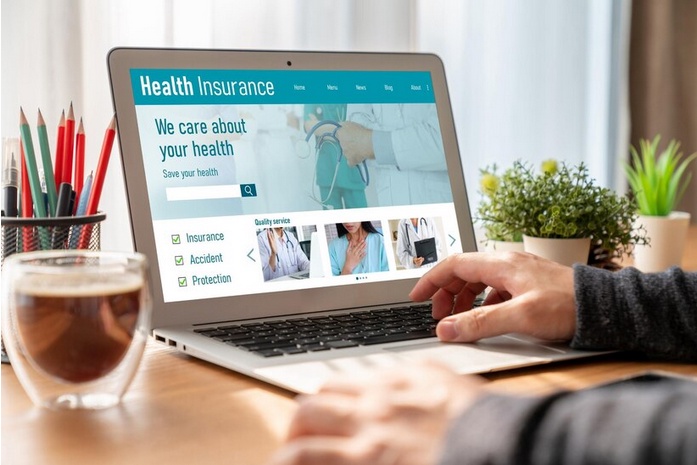In today's digital age, where information is readily available at our fingertips, medical websites play a crucial role in providing accurate health-related information, connecting patients with healthcare providers, and facilitating healthcare services. However, with the abundance of medical information online, users often face challenges in discerning reliable sources from misinformation. Therefore, designing medical websites that prioritize user trust is paramount. This essay explores the importance of trust in medical website design and provides insights into creating user-friendly interfaces that inspire confidence and reliability.
Understanding Trust in Medical Websites
Trust is the cornerstone of any successful relationship, especially in the context of healthcare. When users visit medical websites, they are seeking reliable information to make informed decisions about their health. Trust in these platforms is multifaceted, encompassing factors such as credibility, transparency, security, and usability.
Credibility: Credible medical websites are those that provide accurate, evidence-based information from reputable sources such as medical professionals, research institutions, and healthcare organizations. Users are more likely to trust content that is supported by scientific evidence and authored by qualified experts.
Transparency: Transparency refers to the openness and honesty of a medical website in disclosing its sources, affiliations, and intentions. Users value transparency as it helps them assess the reliability of the information presented and the motives behind the website's content.
Security: Security is a critical concern for users interacting with medical websites, particularly when sharing sensitive personal information or engaging in online transactions. Implementing robust security measures such as encryption, secure payment gateways, and data protection protocols instills confidence in users and fosters trust in the website.
Usability: Usability refers to the ease of use and navigation of a website. Medical websites should be designed with a user-centric approach, ensuring that visitors can find the information they need quickly and intuitively. A well-designed user interface enhances the user experience and reinforces trust in the website's credibility and reliability.
Creating User-Friendly Medical Websites
To design medical websites that prioritize user trust, designers must consider various elements ranging from visual aesthetics to content quality and functionality. Here are some key principles to guide the design process:
-
Clean and Professional Design: The visual design of a medical website should convey professionalism and reliability. A clean layout with a neutral color palette, clear typography, and high-quality imagery creates a sense of trustworthiness and competence. Avoid cluttered layouts or overly flashy elements that may distract users or undermine the website's credibility.
-
Clear Navigation: Navigation plays a crucial role in helping users find their way around a website efficiently. Use intuitive navigation menus with descriptive labels to categorize content logically. Provide prominent links to essential sections such as services, patient resources, and contact information. Consistent navigation across pages enhances usability and instills confidence in users' ability to locate relevant information.
-
Evidence-Based Content: Medical information presented on the website should be accurate, up-to-date, and supported by scientific evidence. Collaborate with healthcare professionals to create or review content, ensuring that it aligns with current medical guidelines and best practices. Cite reputable sources and provide references where applicable to enhance the credibility of the information presented.
-
Patient-Centric Approach: Tailor the content and design of the website to meet the needs and preferences of the target audience – patients and caregivers. Use empathetic language and imagery that resonates with users and addresses their concerns. Provide educational resources, FAQs, and multimedia content to empower users to take control of their health and make informed decisions.
-
Trust Signals: Incorporate trust signals throughout the website to reassure users of its credibility and reliability. Display certifications, accreditations, and affiliations with reputable healthcare organizations prominently on the homepage or footer. Include testimonials, case studies, or success stories from satisfied patients to showcase the positive outcomes of your services. Additionally, prominently feature privacy policies, security badges, and contact information to demonstrate a commitment to transparency and user safety.
-
Responsive Design: With the increasing prevalence of mobile devices, it's essential to ensure that the website is fully responsive and accessible across various screen sizes and devices. A mobile-friendly design not only improves user experience but also signals professionalism and adaptability, enhancing trust in the website's credibility.
Conclusion
In conclusion, designing user-friendly medical websites that prioritize trust is essential for providing reliable health information and fostering meaningful connections between patients and healthcare providers. By focusing on elements such as credibility, transparency, security, and usability, designers can create interfaces that inspire confidence and empower users to make informed decisions about their health. Through clean and professional design, clear navigation, evidence-based content, patient-centric approach, trust signals, and responsive design, medical websites can effectively convey trustworthiness and establish lasting relationships with their users. As technology continues to evolve, it is imperative for designers to stay abreast of emerging trends and user expectations to ensure that medical websites remain trusted sources of health information and support in the digital age.


No comments yet